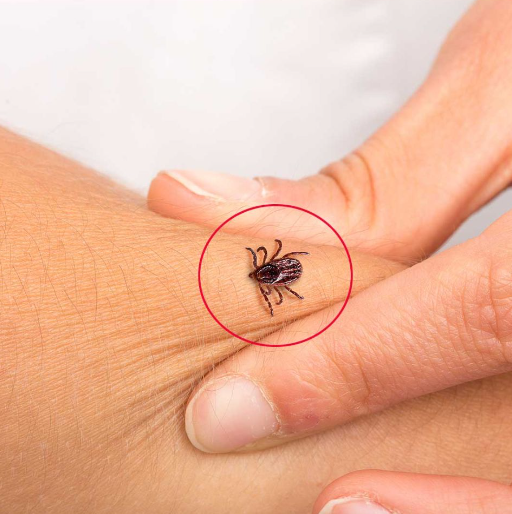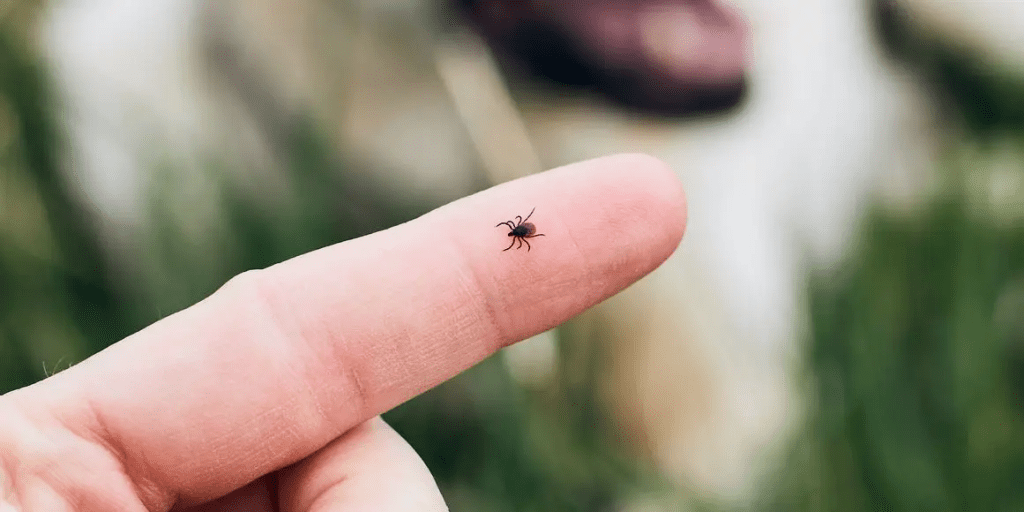Spending time outdoors during the warmer months is a great way to enjoy nature, but it comes with the increased risk of tick bites. Ticks are more than just a nuisance—they can transmit dangerous diseases like Lyme disease. Knowing how to identify a tick bite and what to do immediately is crucial for protecting your health. In this article, we’ll walk you through the signs of a tick bite and the essential steps to take right away.

How to Identify a Tick Bite
Understanding what a tick bite looks like can help you act fast and prevent potential complications. Here are some key indicators to look for:
1. Visible Tick
One of the clearest signs of a tick bite is spotting the tick itself. Ticks can latch onto your skin and remain there for hours or even days. They’re tiny—sometimes as small as a pinhead—so inspect your skin carefully, especially after being in wooded or grassy areas. Pay extra attention to areas like your scalp, behind your ears, and in your armpits, as ticks often hide in hard-to-see spots.
2. Red Spot
A small red spot often forms at the site of a tick bite. If the tick stays attached for an extended period, the area may become more inflamed. While the red spot itself isn’t necessarily dangerous, it’s a sign that you need to monitor for other symptoms that could indicate infection.
3. Bull’s-Eye Rash
A telltale sign of Lyme disease, a common tick-borne illness, is the development of a bull’s-eye-shaped rash around the bite. This rash, also known as erythema migrans, can appear anywhere from 3 to 30 days after the bite. Not everyone who gets bitten by a tick will develop this rash, but if you see it, it’s essential to consult a doctor immediately.
4. Itching or Burning Sensation
While not always present, some people report itching or a burning feeling at the site of the tick bite. This can be a sign of irritation or an allergic reaction to the tick’s saliva.
5. Flu-like Symptoms
Tick bites can sometimes be accompanied by flu-like symptoms such as fever, chills, fatigue, and muscle aches. These symptoms may indicate that you’ve been infected by a tick-borne illness, making it all the more important to seek medical attention.
What to Do Immediately After a Tick Bite

If you’ve identified a tick bite, taking swift action is crucial to reducing your risk of infection. Follow these steps immediately:
1. Remove the Tick Carefully
To safely remove a tick, use a pair of fine-tipped tweezers. Grab the tick as close to the skin’s surface as possible and pull it out steadily and evenly. Avoid twisting or jerking the tick, as this can cause its mouth-parts to break off and remain lodged in your skin. If the mouth-parts do break off, try to remove them with the tweezers. If you can’t, leave it alone and let the skin heal.
2. Clean the Bite Area
After removing the tick, it’s essential to thoroughly clean the bite area and your hands. Use rubbing alcohol, an iodine scrub, or soap and water to disinfect the site. This step helps prevent any potential bacteria from causing further infection.
3. Dispose of the Tick Properly
Never crush a tick with your fingers. Instead, place the tick in a sealed bag or container, wrap it tightly in tape, or flush it down the toilet. Some people choose to keep the tick in a sealed container for future identification in case symptoms develop later.
4. Monitor for Symptoms
Keep a close eye on the bite area for signs of infection. This includes redness, swelling, or the appearance of a rash. Additionally, pay attention to any flu-like symptoms such as fever, fatigue, or muscle pain over the next few weeks. If any of these symptoms occur, contact your healthcare provider immediately.
5. Seek Medical Advice if Necessary

If you notice any symptoms of infection or are unable to fully remove the tick, it’s best to consult a doctor. Your healthcare provider can evaluate the bite and may prescribe antibiotics, especially if you’re at risk of contracting a tick-borne illness like Lyme disease. Early treatment is key to preventing more serious health issues.
Preventing Tick Bites in the First Place
While it’s important to know what to do after a tick bite, prevention is always better. If you’re spending time outdoors, particularly in areas known for ticks, take the following precautions:
- Wear protective clothing: Long sleeves, long pants, and closed-toe shoes can help minimize exposed skin.
- Use tick repellent: Apply a repellent that contains DEET or permethrin on your skin and clothing to deter ticks.
- Stay on trails: Avoid walking through tall grass or wooded areas where ticks are commonly found.
- Perform a full-body tick check: After spending time outdoors, check your body for ticks, especially in hidden areas like under the arms, behind the knees, and along the scalp.
Conclusion: Stay Safe, Stay Informed
Understanding how to identify a tick bite and taking the right steps immediately can greatly reduce your risk of developing a tick-borne illness. While ticks are common in certain areas, being proactive and prepared ensures that you can enjoy the outdoors safely.
Remember, ticks may be small, but the health risks they pose are significant. Keep these guidelines in mind, and don’t hesitate to seek medical help if you suspect a tick bite is leading to something more serious.


